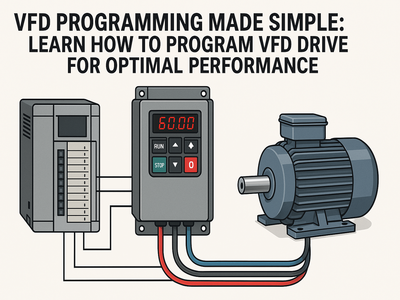Quality Control for Manufacturing is a critical aspect of ensuring product reliability, consistency, and customer satisfaction. Traditional quality control methods rely on manual inspections, periodic sampling, and post-production testing, which can lead to delays, waste, and increased costs due to undetected defects.
With the integration of IoT (Internet of Things), manufacturers can now implement Predictive Quality Control, leveraging real-time data, AI-driven insights, and smart sensors to detect potential defects before they impact production. This proactive approach reduces waste, improves efficiency, and ensures that products meet the highest standards.
In this blog, we explore how IoT is revolutionizing Quality Control for Manufacturing, its key benefits, and how industries can implement predictive quality control strategies to enhance production processes.
1. What is Predictive Quality Control?
Predictive Quality Control (PQC) is an AI-driven quality assurance system that uses IoT sensors, machine learning, and real-time analytics to predict and prevent defects in manufacturing processes. Unlike traditional quality control, which often identifies defects after production, PQC monitors every stage of production in real time, ensuring immediate corrective action.
By integrating IoT-enabled smart devices, manufacturers can:
- Track production variables such as temperature, pressure, humidity, and vibration.
- Analyze machine performance to detect potential deviations.
- Prevent defects by making automatic adjustments in real time.
This data-driven approach helps manufacturers maintain consistent quality standards while reducing waste and production costs.
2. How IoT is Enhancing Quality Control for Manufacturing
Real-Time Data Collection and Monitoring
IoT sensors collect real-time data from production lines, ensuring continuous monitoring of critical parameters such as:
- Machine speed and efficiency
- Raw material consistency
- Environmental factors affecting production quality
With cloud-based analytics dashboards, operators can track these metrics in real time and receive instant alerts when deviations occur.
AI-Powered Predictive Analytics
IoT-driven AI models analyze historical and real-time data to predict quality issues before they occur. This allows manufacturers to:
- Identify patterns that lead to defects.
- Adjust machine settings dynamically to prevent quality deviations.
- Optimize production workflows for better consistency.
For example, in automobile manufacturing, IoT-powered AI can predict paint defects or alignment issues before a car reaches the final stage, reducing rework and material waste.
Automated Defect Detection and Correction
IoT-powered computer vision systems and machine learning algorithms can automatically detect:
- Surface defects on products
- Misalignments in assembly lines
- Inconsistencies in material composition
When an issue is detected, automated corrective actions can be triggered, such as adjusting production parameters or alerting quality control teams for immediate intervention.
Predictive Maintenance for Quality Assurance
Machine failures often lead to production errors and defects. IoT-enabled predictive maintenance ensures that equipment remains in optimal working condition, reducing unexpected breakdowns that impact quality.
Key benefits include:
- Monitoring machine health to prevent sudden failures.
- Scheduling maintenance based on real-time usage data.
- Reducing downtime and improving overall production consistency.
In electronics manufacturing, for instance, IoT sensors can detect anomalies in soldering machines, preventing faulty circuit boards before they leave the factory.
3. Benefits of IoT in Predictive Quality Control
1. Reduced Defects and Waste
Real-time monitoring and predictive insights help manufacturers eliminate defective products before they reach customers, reducing material waste and rework costs.
2. Lower Production Costs
Automating quality control through IoT reduces labor-intensive inspections and minimizes production downtime, leading to significant cost savings.
3. Faster Production Cycles
With automated defect detection and real-time analytics, manufacturers can increase production speed without compromising quality.
4. Improved Compliance and Regulatory Standards
IoT-driven quality control ensures that manufacturing processes adhere to industry regulations, reducing the risk of compliance issues and product recalls.
5. Enhanced Customer Satisfaction
Consistently high-quality products lead to better brand reputation, fewer returns, and increased customer loyalty.
4. Industries Benefiting from IoT-Based Quality Control
1. Automotive Manufacturing
IoT sensors ensure precision in welding, painting, and assembly processes, minimizing defects and improving vehicle quality.
2. Electronics & Semiconductor Industry
Predictive analytics prevent defects in chip manufacturing, circuit assembly, and component testing.
3. Pharmaceuticals & Healthcare
IoT-powered environment monitoring ensures that drugs and medical devices meet strict quality standards.
4. Food & Beverage Industry
Real-time temperature and humidity monitoring help maintain food safety standards and prevent contamination.
5. Aerospace & Defense
Predictive quality control ensures high-precision manufacturing and compliance with strict industry regulations.
5. The Future of IoT in Quality Control for Manufacturing
As IoT technology advances, AI-driven automation, digital twins, and edge computing will further enhance predictive quality control. Future trends include:
- Digital Twins: Simulating production environments for real-time quality optimization.
- 5G-Powered IoT: Faster data transmission for instant quality control actions.
- Blockchain for Traceability: Ensuring transparent tracking of product quality across supply chains.
Manufacturers that adopt IoT-driven quality control systems will gain a competitive edge, ensuring higher efficiency, lower costs, and superior product quality.
Final Thoughts
IoT is revolutionizing Quality Control for Manufacturing, enabling real-time monitoring, predictive defect detection, and AI-driven process optimization. By implementing smart sensors, machine learning, and automated quality checks, manufacturers can significantly reduce defects, minimize waste, and improve product reliability.
At Aknitech Automation, we provide IoT-driven quality control solutions to help businesses optimize production, enhance compliance, and increase profitability.
Looking to integrate predictive quality control into your manufacturing process? Contact us today to explore cutting-edge IoT solutions.







